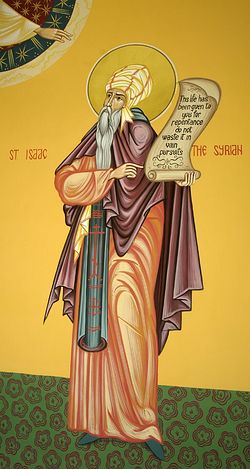
Either way, these attempts to put old wine into do-it-yourself containers can lead to interesting stories in the mainstream press. Interesting? Well, that can be interesting good or interesting bad — since explaining the history and traditions of the ancient churches is a must.
The Denver Post took a stab at one of these stories the other day, describing the doctrinal pilgrimage that led to the creation of a tiny ecclesiastical body that calls itself the Christian Orthodox Church of America (warning: I never did get that website to open). As is usually the case (think Charismatic Episcopal Church), the goal of the church is to fuse contemporary evangelicalism with ancient worship — but with the trailblazers automatically becoming the enthroned leaders of their own new communion.
The Post team did the right thing, at stage one, letting the leader of this tiny new operation — Archbishop P. Gregory Schell — explain his dream and his actions.
“This is a place where East meets West, and Christ is in the center,” says Schell, founder of the 10-year-old Christian Orthodox Church of America, a fusion of ancient Christianity and contemporary evangelical worship.
St. Isaac and the five other churches in Schell’s national network were inspired by Eastern Orthodoxy and likewise claim an apostolic tradition reaching back to A.D. 52 and St. Thomas.
Yet, it is in many respects a modern American faith offering — what Schell calls “convergence worship”: sacramental, liturgical, evangelical and charismatic.
“There is a hunger for real experience of God,” Schell says. “There’s a new generation looking for substance.” He is not daunted that the Eastern Orthodox establishment does not recognize his “orthodoxy,” which means correct or accepted practice. His network of churches — scattered from Rome, Pa., to Pasadena, Calif. — is not part of the Eastern Orthodox fellowship.
“We deeply love and respect the Orthodox faith and Roman Catholic Church. We’re one body in Christ,” Schell says. “As a native American Orthodoxy, we humbly seek to build relationships with them.”
For those who follow trends in American religion, this part of the story should set off several early alarms. Note, for example, that the Post team doesn’t realize that “convergence worship” is not a new term that originated with Schell. That term has been used in a wide variety of fusion worship movements over the past two or three decades. Plenty of other bodies have attempted, and continue to attempt, to mix smells and bells with pop-rock megachurch praise worship.
So “convergence worship” is not new. It’s a bad sign that no one involved in writing and editing this story knew that. The story, thus, contains no information about previous back-to-the-future efforts similar to this one.
Then there is the matter of the ancient past. While the story clearly states that this tiny movement is not linked to Eastern Orthodoxy, the Post team appears to have made no attempts to reach either Orthodox, Catholic or even Protestant historians to discuss the status of this kind of newborn communion. Instead, Schell seems to have served as the authority on all matters ecclesiastical. That works, when he is telling his own story, as he journeys from Roman Catholicism to charismatic Christianity and then on to his current fusion of Orthodox and nondenominational Protestantism.
Where are the historians and voices of authority in this story? Folks, I worked in Denver for nearly a decade and it’s easy to find church historians in a number of different traditions. If they’re busy, there are plenty of Orthodox parishes in the phone book. People will talk. Trust me on that.
In this kind of story, it’s a bad sign when the recent history gets messed up. Things get even messier when it comes time to deal with the ancient past. Eastern Orthodox believers — and Catholics, too — should brace themselves before reading this report’s background materials on church history. Ready? Here goes.
Eastern Orthodoxy is a tradition that formed in the 5th to 13th centuries as a slowly widening rift divided the bishops of Rome and Constantinople. Through the “Great Schism,” Eastern Orthodoxy and Roman Catholicism developed distinctive identities. Eastern Orthodoxy allows married clergy and rejects universal papal authority.
Needless to say, authorities in the Eastern and Western churches would not agree on precisely how to state the history covered in that paragraph. However, historians on both sides would reject the statement that Eastern Orthodoxy “formed in the 5th to 13th centuries.” What we have here is a mini-train wreck. So, moving on.
And how did Schell get ordained and raised to the episcopate? As you would expect, this leads readers into the shadowy world of alternative Catholic orders. You know you are on shaky ground when you hit the phrase “network of independent Catholic jurisdictions founded in 1963.”
So what does the story get right? It appears that the Post talked to Schell and did a good job of telling his own take on his own story. That’s about it. There was so, so much more ground to cover — ancient past, recent past and even the present — and this story missed it all, by a mile.

